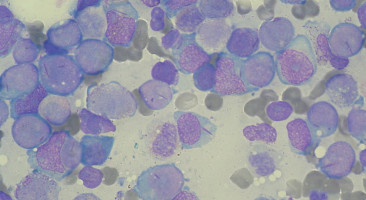
Acute myeloid leukaemia (AML) is primarily a disease of older adults.
Standard commonly utilised lower-intensity therapies, such as azacitidine or decitabine, provide only limited responses with expected median survival of 9-10 months and complete remission (CR) / CR with incomplete count recovery (CRi) rates <40%.
We evaluated the efficacy of a combination regimen of azacitidine and venetoclax in treatment-naïve AML patients that were ineligible for intensive therapy.
In a Phase III randomised double-blinded multi-centre trial called “VIALE-A”, the efficacy of the combination regimen was compared to treatment with azacytidine plus a placebo.
In 431 internationally enrolled patients in the VIALE-A trial, the combination of azacitidine and venetoclax led to improved overall survival (14.7 vs 9.6 months), and improved response rates CR/CRi (66% vs 28%), compared to azacitidine alone.
In addition, the combination was associated with responses that occurred more quickly (median time to CR/CRi was only 1.3 months) and were more durable (lasting 1.5 years), and with increased incidence of transfusion independence (58% vs 34%).
In conclusion, this practice-changing multi-centre randomised Phase III trial establishes venetoclax and azacitidine as a new standard of care for older patients with AML.
Source: EHA
Watch our interview with Dr Courtney DiNardo on the VIALE-A study here.
The World Cancer Declaration recognises that to make major reductions in premature deaths, innovative education and training opportunities for healthcare workers in all disciplines of cancer control need to improve significantly.
ecancer plays a critical part in improving access to education for medical professionals.
Every day we help doctors, nurses, patients and their advocates to further their knowledge and improve the quality of care. Please make a donation to support our ongoing work.
Thank you for your support.